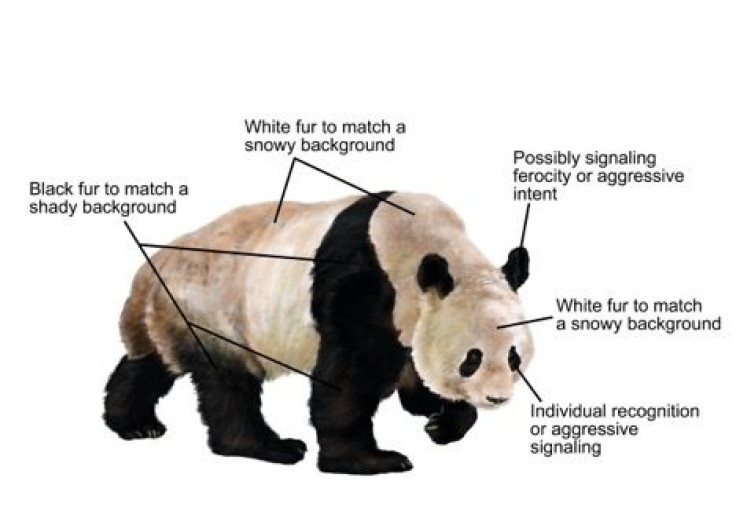Why Giant Pandas Evolved To Be Black And White, According To Science: How They Feed, Protect Themselves And Communicate

In a crowd of animals, a giant panda would stand out — its black and white patches aren’t exactly inconspicuous. But while the panda will likely never make a very good spy, at least now we understand why its appearance is so eye-catching. Scientists have figured out why pandas evolved to be black and white.
Experts have generally believed the answer was camouflage. The Smithsonian’s National Zoo & Conservation Biology Institute in Washington, D.C., says although it has no natural predators, the giant panda “is nearly invisible” when hiding in dense bamboo “and virtually disappears among snow covered rocky outcrops on a mountain slope.”
Read: What People Did on World Wildlife Day
A study in Behavioral Ecology suggests the solution is a combination of camouflage and communication. After analyzing the panda’s habitat and coloring, the researchers say its white fur conceals the creature “against a snowy background” and the black patches on its body perform a similar function in shade. But on the head, a black patch serves another function: The dark ears might signal “ferocity” to scare off other animals and the eye marks may help in identifying individual pandas.

Needing to blend in with both snow and shade might have something to do with their bamboo diet. The University of California, Davis, said in a statement about the research — done in collaboration with California State University, Long Beach — that pandas can’t “digest a broader variety of plants” and thus “can never store enough fat to go dormant during the winter, as do some bears.” Because it is awake throughout the year and roaming, it has to blend with different landscapes.
Other theories on the reason for the black and white have included temperature regulation — with the way black absorbs sunlight and white reflects it. But the study says “there is no compelling support” for that idea.
The findings, however, do not contradict the hypothesis that, in the words of the National Zoo, the pattern helps the pandas “identify one another from a distance so they can avoid socializing, as they are typically a solitary animal.”
The idea that their coloring is used for communication is interesting, given their other types of communication — or, rather, lack thereof. Although they do vocalize while mating, the National Zoo notes that pandas “have round, inexpressive faces” and “do not exhibit body characteristics that communicate visual signals.” Those black ears themselves, even if color is being used to warn potential attackers, “are not flexible enough to cock forward or flatten.”
“Most of their communication is accomplished through scent marking throughout their habitat and territory,” with the help of anal gland secretions, according to the zoo.
Pandas mainly live in western China, eating between 26 and 84 pounds of bamboo every day, the World Wildlife Fund says. The animal can grow to be taller than 4 feet and weigh up to 330 pounds.
See also:
© Copyright IBTimes 2024. All rights reserved.











